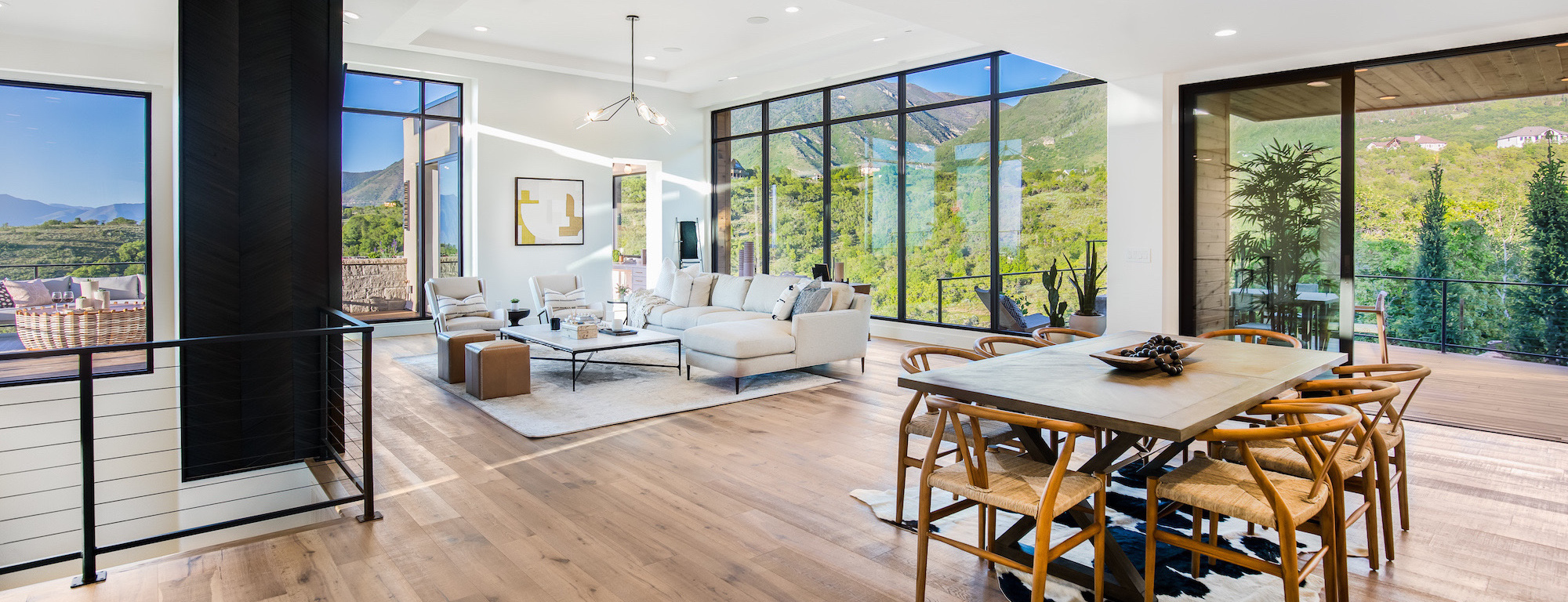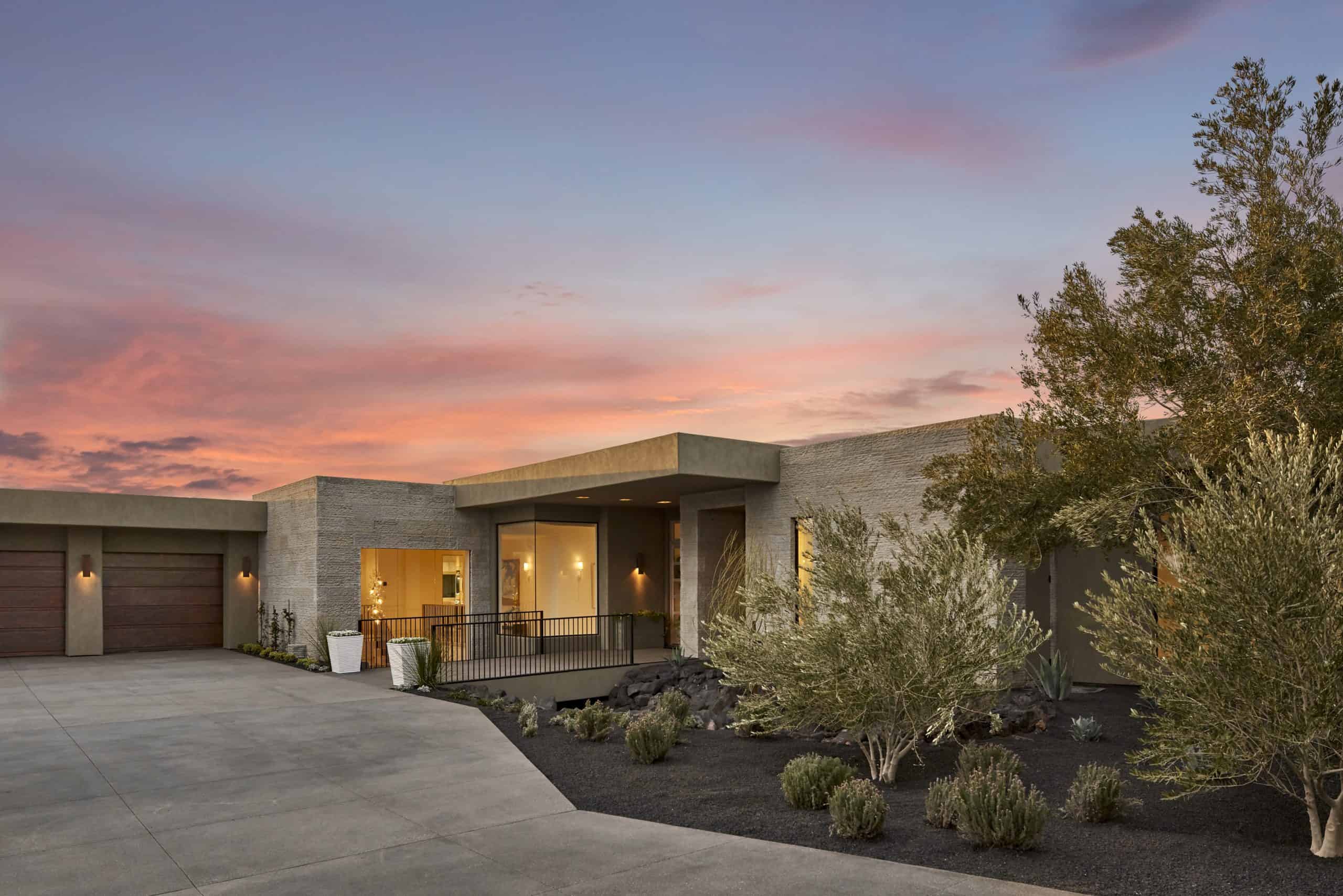
Are you wondering what your interior design style is? Perhaps you’re in the midst of a remodel or building a new home and you anticipate needing to communicate with professional designers and consultants. Well, you’ve come to the right place.
By the time you’ve finished reading this post, you’ll be able to identify, define, and talk about your interior design style better than ever!
Start Here: 27 Most Popular Interior Design Styles
Google’s “Sources across the Web” search results show twenty design styles that are most frequently talked about and referenced online. Additionally, our team identified seven more design styles you should know. Your unique style is most likely a combination of two or three of the styles listed below.
Let’s start by defining all 27 design styles from across the web right now! If you prefer to skip around the different styles, use the links below.
Extra: 7 Additional Interior Design Styles
Quickly discover your interior design style with our quiz:
Mid-Century Modern

The Mid-Century Modern interior design style, often referred to as Mid Mod, draws on inspiration from the middle of the 20th century, most often from the period between the 1930s and 1960s. Natural woods such as teak and walnut are often incorporated into open rooms with abundant use of natural light and glass.
Bold and vibrant colors show up in furniture, wall decor, and accents. Abstract wall art, and sculptures with organic forms, are placed minimally and tastefully within clean lines throughout the space.
Modern Farm House

The Modern Farmhouse interior design style will typically feature a neutral color palette of whites, creams, and soft grays which give an “airy and light” feeling to the space. The modern farmhouse style uses rustic, authentic materials which manifest in exposed wooden beams, shiplap, and reclaimed wood.
Many elements of the modern farmhouse design style are prominent today including barn doors, farmhouse sinks, and free-standing tubs. The simple color palette used in the modern farmhouse design style affords an excellent backdrop for design elements that pop. Oftentimes interior designers will incorporate greenery, metal fixtures, and black fixtures that stand out against whites and creams.
Modern Interior Design Style

Different from the modern farmhouse style, the modern interior design style features clean lines, and prioritizes simplicity, seeking to minimize clutter. Unlike the Mid-Century Modern design style, modern design features a neutral color palette of whites and grays. The form of the furniture used in modern spaces is driven by its function and usually mirrors the geometric shapes used in architecture.
Decor in modern spaces is kept to a minimum. The majority of decor in modern spaces will serve a functional purpose. Visual decor will be present, but will most often not overwhelm the space.
Eclectic Interior Design Style

Eclectic Interior Design Style aims to mix and match elements from other styles to create a unique look suited to the people living in the space. There are no rigid rules associated with this design style, and experimentation is highly valued. You might find a mix and match of striped and floral patterns or a combination of rustic and craftsman with a modern touch. The possibilities are endless.
Coastal Interior Design Style

Coastal interior design style is also referred to as “beach house style.” This design style draws inspiration from coastal and beach environments, mirroring the relaxed and comfortable vibes of beachside living. Light and airy fabrics are used abundantly, ocean and sky blues tend to pop off of an otherwise neutral color pallet, and art and decor feature beach scenes and sea life. Oftentimes, nautical motifs such as anchor symbols, sailboats, ship wheels, and rope details add a bit of charm to Coastal spaces, creating a haven for beach lovers not too far removed from where they’d rather be.
Shabby Chic

The Shabby Chic Interior design style intentionally uses distressed, weathered, and antique furnishings that dance between the rustic and vintage design styles, providing a relaxed yet classy look. The casual look is further enforced by the use of cotton and linen fabrics which are soft and comfortable. A touch of eclecticism is often introduced by mismatching furniture styles, shapes, and finishes. Generally, central pieces of furniture will use a soft color palette of pastels, floral patterns are common in pillowcases, drapes, and curtains.
Hollywood Regency

Glamour, opulence, and the luxurious allure of the 20th-century Hollywood golden age are the hallmarks of the Hollywood Regency Design style. As if taken from the jewelry box of a 20th-century movie star, the Hollywood Regency Design style’s color palette features vibrant colors of black, gold, silver, emeralds, rubies, sapphires, and the like. Luxurious fabrics like velvet, silk, and satin are used for upholstery and drapery.
Equally bold are commonly used accent pieces such as animal prints and marble work further adding to the flair and opulence of the space. Additionally, mirrored glass surfaces are often used, adding even more sparkle and glamour. Today, the Hollywood Regency style is often combined with Art-Deco, Mid-Century Modern, and Neo-Classical styles.
Bohemian

The Bohemian interior design style is often referred to as “Boho” in design circles and media. A Bohemian style is relaxed and airy, using natural materials in furniture, accents, and accessories. A room designed in a boho style may feel a bit like the occupant has traveled the old world, visiting Morocco, India, and Africa, and has now returned with artifacts and souvenirs that blend into the space. In a Bohemian-style room, you might find Persian rugs, kilims, tapestries, or Moroccan poufs. The Boho style is free-spirited, whimsical, and creative with a focus on self-expression.
Art Deco

Similar to Hollywood Regency, the Art Deco (short for “French Arts Decoratifs”) interior design style reached its peak in the years between World Wars One and Two. As with the modern design style, symmetry, and geometry are recurring features of the style. Bold, contrasting colors are used, and stylized, intricate patterns are common. Unlike the image shown above, furniture in this style will typically have straight lines and sharp corners to reinforce the geometric symmetry of the space.
Industrial Interior Design Style

One major hallmark of the Industrial Interior Design Style is the use of raw materials, including brick and metals. Other features are large open spaces with high ceilings, exposed beams, pipes, and ductwork, and large windows. Designers will often use greenery to balance out basic color palettes in addition to tasteful selections of artwork to accent brick and metal walls.
Rustic Interior Design Style

Rustic Interior Design Style emphasizes natural and unrefined elements. The rustic design evokes a sense of ruggedness and is most often used in mountainous or rural areas. Furniture in these spaces will often have a weathered or distressed finish with a warm, neutral color palette. Decor often appears hand-crafted or antique; natural elements like antlers, animal hides, or dried plants are often featured. Large windows are often used to inspire the finishes and decor in the home, inviting the natural world into the home.
Contemporary Interior Design Style

Contemporary design style is rooted in the present, striving to reflect current trends and aesthetics. Open and airy spaces, clean lines, large windows, glass doors, open shelving, and geometric patterns are all elements of contemporary design. Unlike the photo above, most contemporary rooms will display minimum clutter so as not to detract from the openness of the space. Popular cultural themes are often incorporated such as eco-friendly design and technology integration.
Minimalism Interior Design Style

The minimalist interior design style evokes calm and serenity. Standard features of minimalist interior design include clean lines, neutral color palettes, decluttered spaces, and a general vibe of simplicity. Minimalist designers will likely focus on quality over quantity, often selecting finer, natural materials like stone, wood, and glass.
Traditional Interior Design Style

A traditional interior design style aims to create a timeless look that feels comfortable and familiar. Neutral colors, elegant furniture with classic patterns, and materials like silk, damask, or brocade would likely be used in furnishings. Traditional rugs are often added to create a touch of luxury, and crystal, glass, or brass chandeliers are often used.
Mediterranean

The Mediterranean Interior Design Style can be identified by a warm color palette, use of or references to colorful mosaic tile work, stucco walls, and heavy wooden furniture. In a Mediterranean interior design space, you’ll likely find a tasteful use of iron-wrought accents in drawer handles, ceiling fans, or trims. Potted plants, especially those like olive trees, bougainvillea, and succulents, are commonly used to bring a touch of greenery and life into the space.
French Country

The French Country interior design style draws inspiration from the rural French countryside which manifests in warm and earthy colors like terra cotta, muted blues, sage greens, and lavender. Exposed wood beams, stone fireplaces, and plastered walls are common architectural features that complement antique or handcrafted furniture. Toile de Jouy fabric patterns are commonly used and vintage accessories like clocks, sconces, and mirrors add a sense of history to the decor.
Japandi

Japandi is a Japanese-inspired interior design style that borrows the principles of Wabi-Sabi, an ancient Japanese philosophy that sees beauty in imperfection and appreciates simplicity. Designers will decorate a room minimally, with Japanese-inspired, functional furniture. Balance is emphasized in furniture and accessory placements, and indoor plants bring a touch of life to the space. A Japandi-styled room won’t feel cluttered or cramped. Handcrafted pottery, art, and ceramics that reflect the values of Japanese art will likely be used in decor, as well as floor lamps, and layered rugs.
Transitional

The transitional interior design strikes a balance between traditional and modern interior design. The result is a timeless look that allows for a combination of clean and curved lines, maintains symmetry, and enough space for creativity and personal expression. The transitional design will be less cluttered than a traditionally designed space while allowing for more decor and accessories than the typical modern design. Transitional design touches on eclecticism in the sense that furniture and accessories can be inspired by many different styles and periods.
Southwestern

Often referred to as “Southwest Style,” this design style draws on elements from the American Southwest including states like Arizona, New Mexico, and Texas. Deep reds, terra cotta, and earthy browns dominate this design style – all working to enhance a connection to the natural beauty of the region. Common materials are stone, adobe, and regional woods like ponderosa pines. Rustic and craftsman styles shine through in the furniture. Native American and Mexican patterns appear in rugs, upholstery, and artwork. Desert plants like cacti bring a hint of nature and stand out against deep browns and reds that dominate the space.
Vintage Interior Design Style

The vintage interior design style is fairly open-ended, but the idea is that you’re drawing on inspiration from the past. Designers will mix eras and styles to come up with different vintage looks. Common styles to draw upon for inspiration are mid-century modern (mid-mod), Hollywood regency, and Art Deco. Old-type writers, clocks, rotary telephones, and radios are often used as accessories in this design style. Retro patterns like polka dots or checkers are used in upholstery, flooring, or ceiling patterns. Finding authentic, old pieces from thrift stores or garage sales is a popular way for designers to achieve a vintage look.
Cape Cod Interior Design Style

A Cape Code Interior Design Style will display a crisp color palette against abundant wood finishes. Open, gabled roofing with steep pitches and sometimes dormer windows provide a sense of coziness, which a designer will strive to compliment with casual, unpretentious furnishings. Natural light illuminates the space in abundance, and coastal-inspired accents (aka sailboats) are likely to make an appearance.
Victorian Interior Design Style

The Victorian Interior Design style will feature rich colors, antique or reproduction furniture, ornate lighting, dark woods, and elaborate wall and floor colorings, often with floral designs. Oil paintings or portraits from the Victorian era are commonly used. Fireplaces tend to be a central feature focusing on Victorian styling, like stone relief or ornate metals.
Craftsman Interior Design Style

Craftsman Interior Design style features hand-crafted finishes and furniture. More abundant use of wooden furniture and finishes are used compared to other styles, built-in furniture is common, and earth color tones tend to be abundant. Textiles and artwork often feature references to nature, birds, or other plants and animals. Designers will look to highlight features like built-in bookshelves, benches, and window seats.
Colonial Interior Design Style

A Colonial Interior Design Style will feature antique furniture from the Colonial era often composed of timeless and earthy hues. Wooden flooring and finishes harken back to the Colonial era as well often with features like peg rails and hooks for hanging coats and hats. Designers will look to add in artwork and decor that revives the Colonial era, often featuring landscapes and portraits of sculptures of antique tools from their era.
Neoclassical Interior Design Style

The Neoclassical interior design style is a revival of the 18th-century classical style which draws inspiration from ancient Rome and Greece. A strong sense of symmetry and balance will echo through the room, often with precise symmetry on a wall or section of a room. An elegant color palette of white, cream, pale, and beige creates a sense of serenity and sophistication while marble and stone finishes again harken back to ancient Rome and Greece.
Tudor Interior Design Style

The Tudor Interior Design Style draws inspiration from the English Tudor style, which spanned from the 15th to the 17th century. Design choices in this style are heavily influenced by solid architectural features like exposed wooden framing, steeply pitched roofs, and stone fireplaces with large chimneys as focal points in a room. Heavy fabrics, mainly used in curtains, add a medieval charm to the spaces. At the same time, a rustic and warm color palette of deep reds, browns, greens, and gold is often incorporated to complement dark woodland finishes.
Georgian Interior Design Style

Known for its classical and formal style, Georgian Interior Design tends to be highly symmetrical and balanced. Furniture in these spaces is often arranged in pairs with a sense of order and proportion. Georgian artwork is often featured with ornate framing, floral patterns are often used in furnishings, and it is not uncommon to see displays of fine china or porcelain in glass-fronted cabinetry.






